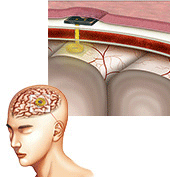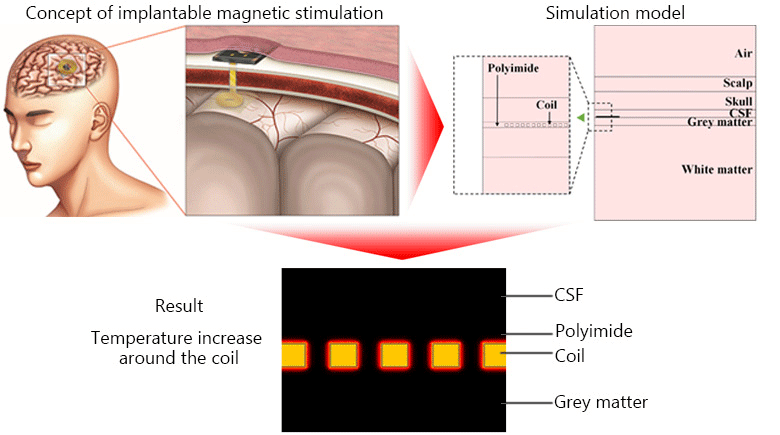Hee Jin Park, Jae Hun Seol, Jeonghun Ku, Sohee Kim, Gwangju Institute of Science and Technology, and Keimyung University, Korea
Micromagnetic stimulation using coils sufficiently small to be implanted has been recently suggested as an alternative to overcome the limitations of conventional electrical stimulation. For such magnetic stimulation coils to be implantable in the brain, the temperature increase in the brain tissues induced by the coil needs to be minimized as it is thought to be the primary source of adverse effects. We conducted computational simulations on the thermal effects of implantable magnetic stimulation in a simplified brain model using finite element analysis (FEA), by varying geometric parameters (outer diameter, line width, insulation thickness) of microfabricated planar spiral coils and using repetitive transcranial magnetic stimulation pulse patterns (QPS, cTBS). It is revealed that the temperature increase in the brain can be controlled by a careful design of planar coils to implant. The most critical parameter in designing planar coils is the outer diameter. Considering the dimensions of line width and spacing that can be realized by standard photolithography for micro-patterning, the coil diameter greater than 8 mm is required to induce a temperature rise in the brain of less than 1 °C. If the coil diameter is larger than 10 mm, the subsequent temperature rises in the brain tissue can be maintained consistently at about 0.24°C or lower. Selection of the number of coil turns must rely on trade-offs between the required current and voltage that the implanted source can generate, as the required voltage increases while the required current decreases with increasing number of coil turns. Additionally, the coil insulation with a thickness of a few micrometers was found to suppress the temperature rise in the brain effectively. The results obtained through this FEA study are expected to serve as guidelines for designing planar coils to be implanted in the brain.
Keywords: brain temperature, finite element analysis (FEA), implantable magnetic stimulation, planar coil, temperature increase


